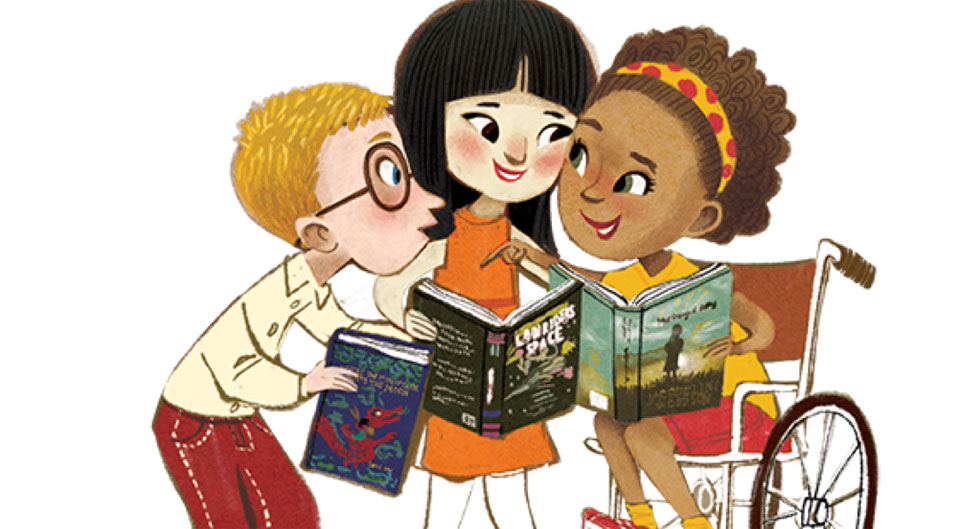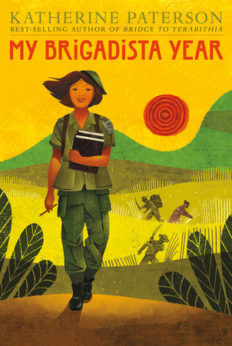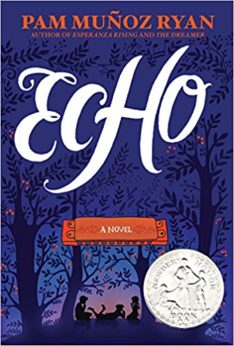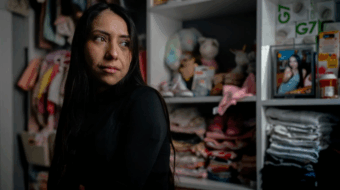
Good children’s fiction cultivates empathy, imagination, social conscience, and historical awareness. Some of the best children’s novels written during the early twentieth century also raise class consciousness—Natalie Savage Carson’s The Family Under the Bridge, for example; socialist E. Nesbit’s Railway Children, Eleanor Estes’s The Hundred Dresses, and the original Mary Poppins books, which are wonderfully critical of capitalism and give magical superpowers to a nanny and her working-class friends.
While the politics of these older books hold up well, it’s hard to miss how very white the characters are. Fortunately, a new wave of multicultural, politically attuned children’s fiction is now hitting the shelves. Thanks in part to a movement called “We Need Diverse Books,” many new novels for middle graders and young adults include more people of color, gay and lesbian characters, ethnic and religious minorities, and the differently abled.
The six novels discussed here offer nuanced portrayals of diverse characters confronting war, poverty, racism, sexism, inequality, and emigration. They all avoid the near-nihilism of recent bestsellers like The Hunger Games, which bring attention to inequality and then suggest no solution. At the same time, these books are so well written and engaging that even reluctant readers won’t want to put them down.
Escape from Aleppo (2018), by N.H. Senzai, is a thrilling story of a young girl’s escape from the besieged city after becoming separated from her family. Already suffering from PTSD due to earlier bomb attacks, Nadia must force herself to overcome her paralyzing anxiety. As she navigates the dangerous streets, hiding from different rebel groups as government forces close in on the city, readers gain a better understanding of the war in Syria. Nadia’s encounter with a network of people working to protect ancient manuscripts and artifacts from the bombing highlights the cultural costs of war. An elderly man who helps Nadia cross the border turns out to have a checkered past; with Nadia, readers learn that people who have made mistakes may be able to change and do good. This timely book is highly recommended for readers 9 and up. 
My Brigadista Year (2017), by Katherine Paterson, award-winning author of the much-beloved Bridge to Terabithia, is a true gem. It is a vivid, carefully researched account of one teenager’s positive experience as a teacher in Fidel Castro’s 1961 literacy initiative. Lora has led a sheltered life in Havana, attending private school. But when the Batista regime is overthrown, she feels called to join the cadre of young people who travel to rural areas to teach the farmworkers to read and write. The teachers and the farm families succeed in breaking down social barriers and learning from each other. The real literacy campaign taught over 700,000 Cubans to read and write; the country still has one of the highest literacy rates in the world. Paterson shows how this initiative embodied true communist ideals. Highly recommended for readers 9 and up.
The Land of Forgotten Girls (2016), by Erin Entrada Kelly, traces the difficult but inspiring development of two sisters from the Philippines. Soledad and Ming were brought to New Orleans by their father and young stepmother, Vea, who married opportunistically in order to emigrate. Not long after arriving in the U.S., their father abandoned them. Isolated and unprepared for motherhood, Vea mistreats Soledad and Ming. Soledad remembers their “real” mother and older sister, both of whom passed away. She makes up stories to cheer her little sister, giving the grim reality of a rat-infested apartment a magical other dimension. Neighbors in the building become mythical characters. But Ming believes the stories. Will the stories come true, or has Soledad set Ming up for a terrible fall? There are no fairy tale endings, but this novel traces a plausible process by which disadvantaged people living in the same place awkwardly start to help each other and form a community. Highly recommended for readers aged 9 and up.
Esperanza Rising (2002), by Pam Muñoz Ryan, is the story of a privileged young Mexican girl, child of a landowner, who is forced to flee to the U.S. after her father’s death. Esperanza and her mother, stripped of their position and wealth, become farmworkers alongside their former servants. Initially unable to handle the work, Esperanza slowly develops strength of character and learns to admire the people she formerly scorned.
This novel, set in the 1930s, does a good job of showing the positive values of cooperative working-class culture, and helps readers imagine what it is like to be an immigrant. However, striking workers are presented with ambivalence. Parents or teachers may want to discuss questions the novel raises about labor relations. Was Esperanza wrong to cross the picket lines even though she needed money so badly? Recommended for readers 8-13.
Teens may prefer Muñoz Ryan’s Echo (2015), a much bigger book physically and conceptually. Using touches of magic realism, Echo weaves together the stories of a Jewish boy in Nazi Germany, two orphans in the Depression-era U.S., the daughter of Mexican-American farmworkers in California, and the grandchild of a Japanese couple interned during World War II. It is a sad but ultimately hopeful chronicle of oppressed people helping each other survive, preserving beauty in their lives and passing along hope to the future. Recommended for readers aged 13 and up.
Edward Bloor’s Tangerine (1997) was published twenty years ago, but feels quite contemporary. When Paul moves to a new housing development in Florida, his biggest worry is how to convince the coach that he can play soccer despite his visual impairment. But when his school is swallowed up by a sinkhole (poor environmental planning), he faces new challenges. He and his friends are bused to a school in a lower-income neighborhood populated by Latinx families who work in the citrus groves. Paul makes the soccer team at this school, and his teammates gradually come to accept and trust him. In turn, Paul comes to respect their work and their knowledge of the plants and the weather. But Paul’s older brother, a near-sociopath whose criminal behavior has been covered up by their parents, almost ruins everything.
Bloor does an excellent job of tracing several possible outcomes when families from different class and ethnic backgrounds interact. The first person narrator, Paul, is refreshingly insightful and may help readers understand their own feelings in similar situations. The book won many awards for its subtle, perceptive depictions, and is highly recommended for readers aged 13 and up.
While these novels stand out for what we might call their socialist tendencies, most children’s literature promotes values on helping, sharing, caring for the environment, cooperation, empathy, respect, openness, acceptance, and equality—the very values that capitalism later works to negate. Why is taking turns good on the playground but not in business? This painful contradiction makes a good starting point for further discussion.










